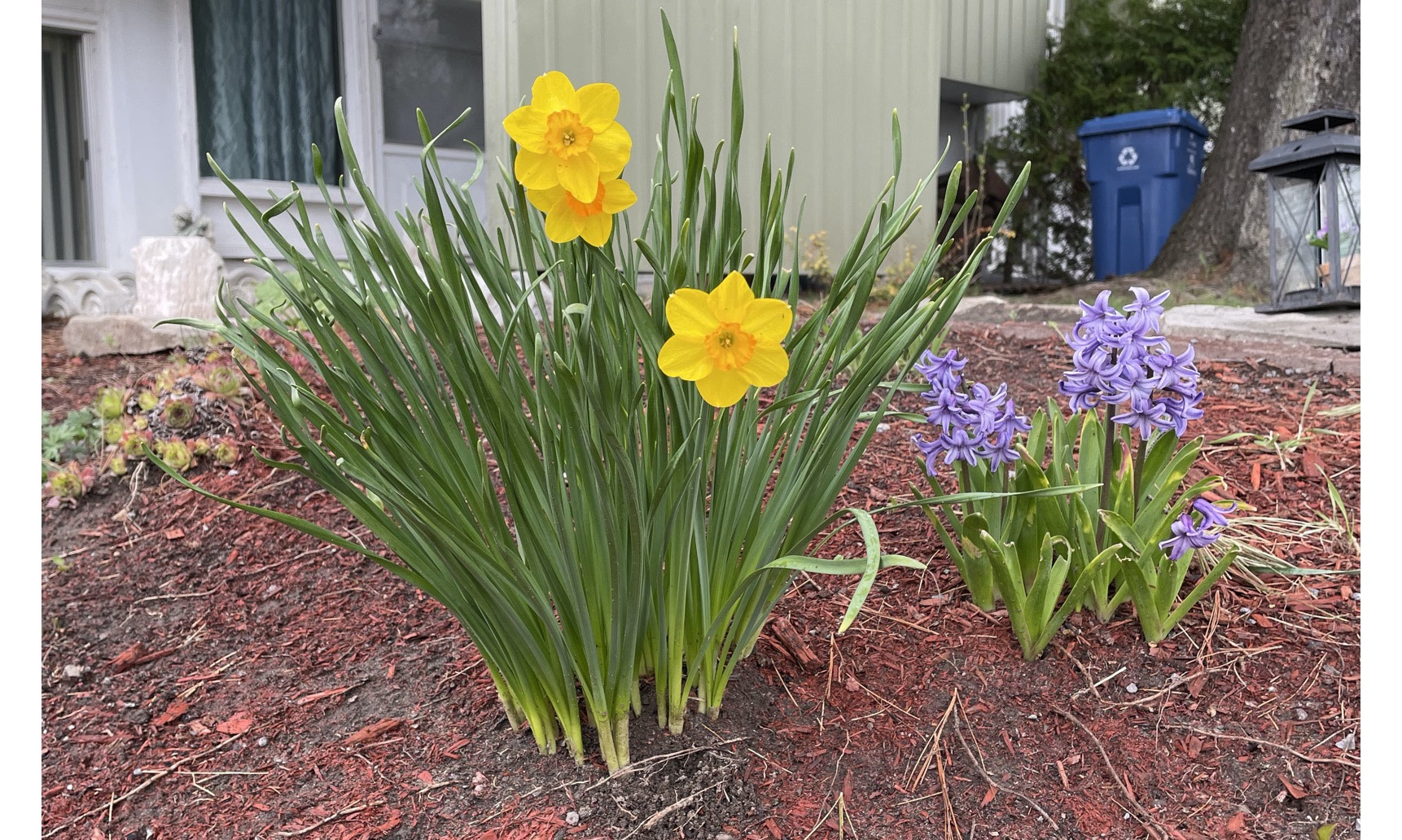Spring has sprung: plant away!

Whether you’re a gardener or an outdoor enthusiast, everyone I know is delighted that spring has finally arrived.
Gardeners preparing for planting
My husband Eric – a long believer in raised-bed gardens for our vegetables – has built brand-new containers from poplar selectively felled on our property. Increasingly well-known gardener Tara Nolan (former editor of Canadian Gardening) has just authored her first book, Raised Bed Revolution (.taranolan.com/tag/ raised-bed-revolution/). In it, she explains the virtues of raised beds, and gives step-by-step instructions on building them.
What are raised beds? Think of a garden that is built up from ground level (i.e., raised) with a “surround” or supporting “wall” built either from planks or from recycled items such as a shelf.
The benefits to them include keeping grass and many other weeds at bay (or, more at bay...) and, because the bed is raised, it means we don’t have to bend over so much. Also, if these constructed beds are not very wide, it allows us to more easily reach over, pull weeds and cover exposed soil with mulch to retain moisture and deter weeds.
Nolan’s book is packed with tips. And because she’s also a Savvy Gardener blogger, it’s easy to find her other garden-related wisdom. (savvygardening.com/10-upcycling-ideas-garden/).
Harvesting – already?
Former Pontiac resident and gardener extraordinaire Ted Fort taught us about how parsnips are best eaten in early spring. Although we plant these root veggies in the spring, the trick is to let them overwinter in the garden. Then? After the snow’s gone and ground is workable, dig them up, fry them in butter or coconut oil and voilà: you are in for a sweet taste sensation. Tip? They also make wonderful cake – similar to carrots.
Plantings
Spinach and peas love cooler soil for germination, so if you haven’t got yours planted out yet, do so asap. And remember that with peas, it’s fun to try the edible pod peas such as sugar snaps. These are delicious either picked and eaten raw – either alone or tossed in salads, steamed, or lightly stir fried.
Another tip I have to share is to plant edible flowers amid the veggies. Often, flowers make excellent companion plantings. For instance, nasturtiums attract aphids, so it’s great to plant them in corners of the garden. Not only are they colourful, they are edible: flowers come in a variety of colours, from deep ruby red to orange, to pale yellow, so they make a gorgeous salad. Leaves? Put them in salads and sandwiches. Finally, their chubby seedpods can be eaten raw, cooked, or pickled as “fake capers”. Mmmm.
Remember to experiment: it’s fun! Try planting heritage tomatoes or a new type of lettuce. Have you tried Mesclun Mix, for instance, a packaged assortment of salad greens that come in spicy or plain taste arrangements?
Go native in your beds
Many people want to attract wildlife such as bees, butterflies and birds and the best way is to use native plants. That is, plants that haven’t been introduced to Canada. Enter the team of Michael Peterson and Trish Murphy who specialize in growing native plants at their Bristol farm, Beaux Arbres. Visit them there (29 Ragged Chute Road; 819-647-2404) on their open house on May 29 to learn about what might grow where in your gardens.
Whether you have a back deck, a patio, a sunny windowsill for herbs – or a large garden, it’s time to grow!
Contact Katharine Fletcher at fletcher.katharine@gmail.com






